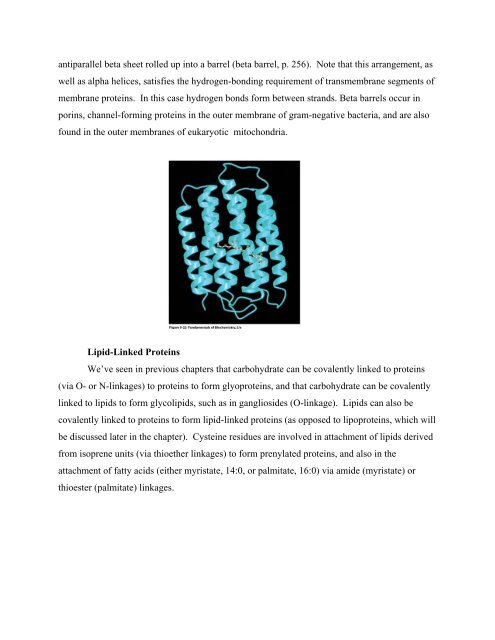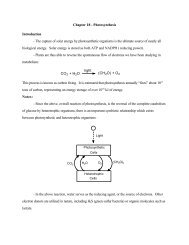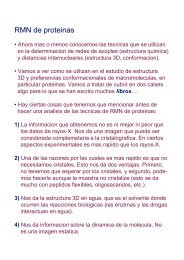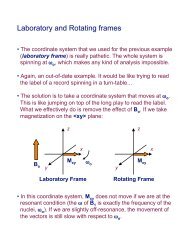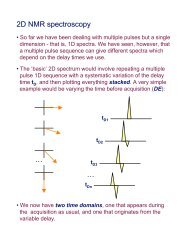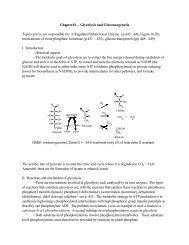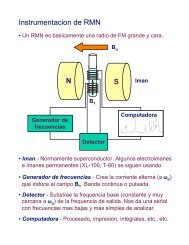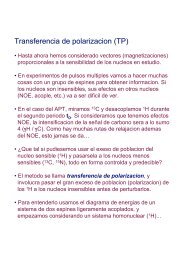Chapter 9 - Lipids and Biological Membranes
Chapter 9 - Lipids and Biological Membranes
Chapter 9 - Lipids and Biological Membranes
Create successful ePaper yourself
Turn your PDF publications into a flip-book with our unique Google optimized e-Paper software.
antiparallel beta sheet rolled up into a barrel (beta barrel, p. 256). Note that this arrangement, aswell as alpha helices, satisfies the hydrogen-bonding requirement of transmembrane segments ofmembrane proteins. In this case hydrogen bonds form between str<strong>and</strong>s. Beta barrels occur inporins, channel-forming proteins in the outer membrane of gram-negative bacteria, <strong>and</strong> are alsofound in the outer membranes of eukaryotic mitochondria.Lipid-Linked ProteinsWe’ve seen in previous chapters that carbohydrate can be covalently linked to proteins(via O- or N-linkages) to proteins to form glyoproteins, <strong>and</strong> that carbohydrate can be covalentlylinked to lipids to form glycolipids, such as in gangliosides (O-linkage). <strong>Lipids</strong> can also becovalently linked to proteins to form lipid-linked proteins (as opposed to lipoproteins, which willbe discussed later in the chapter). Cysteine residues are involved in attachment of lipids derivedfrom isoprene units (via thioether linkages) to form prenylated proteins, <strong>and</strong> also in theattachment of fatty acids (either myristate, 14:0, or palmitate, 16:0) via amide (myristate) orthioester (palmitate) linkages.


